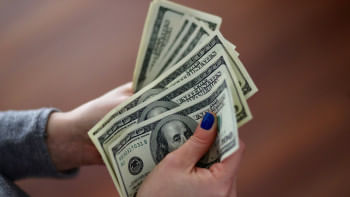Embracing our Bengali beauty

As a child, I had an oddly funny nickname - "Buchi". Somehow my nose, a tiny part of my face, ended up determining my whole identity for some people. Even though I left Bangladesh at a young age, I still wasn't able to escape the scrutiny of not being fair enough or "lovely" enough to suit the deshi criteria of beauty.
Bangladeshi and Indian media continuously bombard us with the message that light skin and European facial features are the golden standards for beauty. This is a long existing problem for practically all countries impacted by colonialism, as during colonial times, the existence of 'too much' melanin and a Mongloid facial structure was a symbol for the "lower class" and signified inferiority. It is 2017; a long time has elapsed since the British ruled the region, yet somehow, our self-hate has amplified so much as to produce a growing global multibillion dollar skin whitening industry. The discrimination that exists towards darker skinned individuals stems not only amongst the ill-educated poor, but is actually more rampant in the middle and higher middle class, educated societies of Bangladesh.
While India, our neighbour, has launched a "dark is beautiful" campaign to combat the widely popular intolerant message prevalent in the country, Bangladesh is yet to rise to the occasion and bring home a more inclusive narrative of beauty.
Historically and geographically speaking, Bangladesh is unique in that it is bordered by India and Myanmar, while being near to Nepal, China, and Bhutan. So naturally, we Bangladeshis have been endowed with genetics that encompass all those surrounding regions. We cannot expect the majority of the population to have light skin and long pointy noses, for those features generally do not reflect our history nor our roots. Our brown skin and our unique features should be embraced and celebrated, not erased with bleach nor hidden with makeup or plastic surgery.
When we examine the Bangladeshi media, we openly see an endorsement for light skin and European facial features. Whether I am watching a drama, the news, or even just a TVC ad, the characters are "whitened up" and their makeup done to make them appear more "foreign". I still remember jokingly commenting to my mother how models on Bangla Television walk around with 'cooking flour' on their faces! All of them appearing to blend into one identical entity, void of personality, with lightened skin and coloured contact lenses that hide the beautiful original shade of their eyes.
What does it imply when we as a society promote and encourage the "fair and lovely" complex in today's educated modern society? Are we essentially saying that to be beautiful we have to expunge all our pigments and along with it, our identity? By erasing the brown tints in our skin, are we trying to conceal the fact that we are predominantly an agriculture oriented, fertile nation with hard working farmers who toil in the sun to feed the rest of the growing population? I am proud to be brown, just like the farmers and rickshawallas of Bangladesh. Today, I feel proud to carry forward the genetics of brown skin from the same brave people who fought in Bangladesh's Liberation War. Personally speaking, changing myself to look like someone that I am not, means denying the rich culture and history of my fellow Bangladeshi people.
It is common to hear that we as human beings always want what we cannot have, but not many people promote the idea that we should embrace what we do have. So I will go ahead and say it: Dear Bangladesh, LOVE the skin that you have, for it reflects the uniqueness that you offer to the rest of the world. If we don't embrace the beauty in our roshogolla round faces, our bulky noses and other ethnically "Bengali" features then we are discarding our rich heritage in order to conform to an ill-formed, ignorant, archaic ideology.
The writer is a medical student at Florida State University College of Medicine, USA.

 For all latest news, follow The Daily Star's Google News channel.
For all latest news, follow The Daily Star's Google News channel. 



Comments